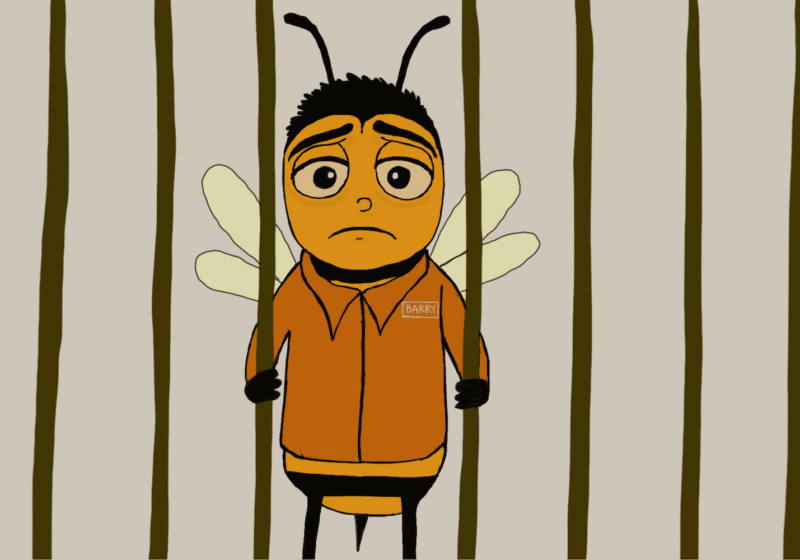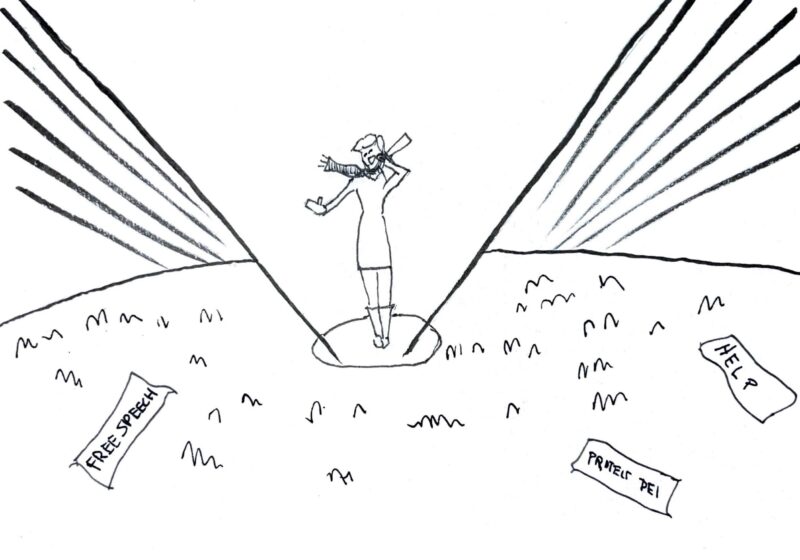And we find ourselves back.
“Gilmore Girls: A Year in the Life,” smushes everything fans saw in the show’s first seven seasons into four 90-minute episodes, complete with some Logan assholery, some Jess pining, a run-in with Dean at Dosey’s Market, a Rory-Lorelai schism, some badass Emily Gilmore, an absent Christopher, a few Luke rants, a marriage… and, of course, an unplanned pregnancy.
Choosing to conclude the revival with the now-infamous two words—“I’m pregnant”—forces us to infer that we’re ending where we began: A Gilmore Girl having another Gilmore Girl, impregnated by a smooth-talking, handsome, reckless blond gentleman who we must assume won’t be around (see: Odette, his French heiress-fiancé).
It’s a brilliant, if infuriating, move, really. Show creator Amy Sherman-Palladino took the fictional “Gilmore Girls” world and loaded it with enough open-ended plot points to require another seven seasons to resolve.
She inserted, in that irresolution (which has left “GG” fans distraught), the propensity to think of Lorelai and Rory as ever-growing, as more than fictional characters. There is reality in not being allowed to know what comes next.
So, now that the dust has settled…
The biggest danger in a reboot like this is a show over-acknowledging its re-bootedness, like a not-so-tougue-in-cheek, “Hey, look! We exist again!”
This is not what “GG” fans need or want. We want, instead, to be brought back into the world and forget we were ever away, not to be reminded over and over that we ever left.
“A Year in the Life” for the most part succeeds in bringing us back without being too corny—although there were a few heavy-handed moments (like in “Fall,” when Jess comments on poor communication skills in relationships saying, “I’ve never had that problem before,” or when Lorelai and Rory meet up in the beginning of “Winter” and Lorelai says, “Haven’t done that for a while”).
Mostly, though, the magic was back.
During our first walk-through of Stars Hollow, we get the same fast-paced dialogue, the same characters (minus the atrocious scene in “Fall” when Melissa McCarthy returns as Suki and sounds like an old smoker-lady—maybe it’s all the dirt she’d been eating), and the same Stars Hollow personality. New town quirks were added, too, like the septic tank drama and the secret bar.
Some attempts to capture how our broader culture has changed in the last decade worked well. Luke’s antagonism toward technology extends from the circa 2000s cell-phone hate to providing his diner with fake WiFi passwords.
Other endeavors in bringing “GG” into the new decade were a bit much—see the awkward incorporation of phone text shots and the “30-something crew.” All in all, the efforts to recreate Stars Hollow in a time other than the early 2000s—and show the characters’ rebellion against such a reality—was commendable.
The “Winter” and “Fall” episodes, which were written and directed by Sherman-Palladino, were far better than the “Spring,” and especially the “Summer” episodes, which were written and directed by her husband, Daniel Palladino.
Specifically, the musical Stars Hollow puts on in “Summer” was painful to watch (10 minutes of screen time, really?). Aside from the ballad performed by Sutton Foster at the end of the episode, which leads to Lorelai’s decision to do “Wild,” the sequence was pointless.
Lorelei’s reaction to the musical felt completely off, as well. In the show’s fifth-season episode “To Live and Let Diorama,”in which Taylor tries to turn the old Twickum house into a Stars Hollow Museum, we watch a similarly-bizarre Taylor interpretation of Stars Hollow.
Then, Lorelai is amused and excited about another quirky Stars Hollow moment. She says when there’s a break, “What? They’re going to leave us on a cliffhanger?” Likewise, the older episode’s museum sequence was split between a couple two minute moments of museum, not one excruciating block of 10 minutes.
Lorelai’s disgust in the “Summer” episode as she watched the musical, and her genuine, even pretentious, critique of its execution, felt off, and this was never expanded upon. No other facets of the reboot did anything to suggest that this isn’t the same goofy, weirdness-appreciating Lorelai we all know and love, so seeing her react negatively to something so typically cheesy and bizarre and Stars Hollow was disappointing.
The infamous pop-culture references were also better handled by Sherman-Palladino than by her husband. What makes “GG” references successful is their quippy awareness of themselves as references. They are delivered in a way that allows the viewer to think, ‘OK, that was a reference; did I or did I not understand it?’
In “Summer,” I cringed as Rory delivered the line, “Let’s have another round tonight,” a clear Hamilton reference, with no twinge of Rory-Lorelai understanding. It was delivered too… normally.
And what were “Spring” and “Summer” missing? It wasn’t until it returned in “Fall” that I realized.
They were missing the “Gilmore Girls” track. The la-la-la-la-la-las, the feel of the show epitomized by the guitar riffs. Maybe we were supposed to get angry and lost along with the “Gilmore Girls” themselves in those hotter seasons.
Stars Hollow always was more special in winter and fall, anyhow.
Logan and his minions’ final romp around New England with Rory was fun. It felt good to be back with the Life and Death Brigade, one of the more colorful and lovable plot sequences of the original series. It was as if an occult hand had infiltrated the episode to drop as many eerie references as possible into Rory’s walk to the Stars Hollow Gazette. (“By the pricking of my thumb, something wicked this way comes!” as a top-hatted man rides by on a unicycle? That’s just gold.)
But, it felt trippy because it turned into an “Across the Universe”-type music video, using the actual music from the movie, even.
This montage, along with other music-video moments and unconventional camera movements, are reflective of the show’s attempt in its new Netflix-original domain and 90-minute time stamp to be more cinematic, one which also felt unwelcome at times.
Kelly Bishop as Emily Gilmore deserves the final bow, as always. The progression of Emily in these last four episodes was the most satisfying by far. Her performance was the most visceral, and her depiction of an elderly widow whose life has been redefined without her partner was moving.
When she moves to Nantucket, we realize she knows exactly what she’s doing. Until then, though, Emily scares us into thinking she’s going to end up manipulated by her maid’s family, and that the towering Emily Gilmore had become but a guest in her own home.
“A Year in the Life” tried to address what happens when we find ourselves dissatisfied or at a standstill, and good on the writers for not allowing us the resolution we want as fans so badly.
Ironic, isn’t it? The way we hoped to escape into Stars Hollow, only to find ourselves surrounded by characters who don’t really know what they’re doing there?



